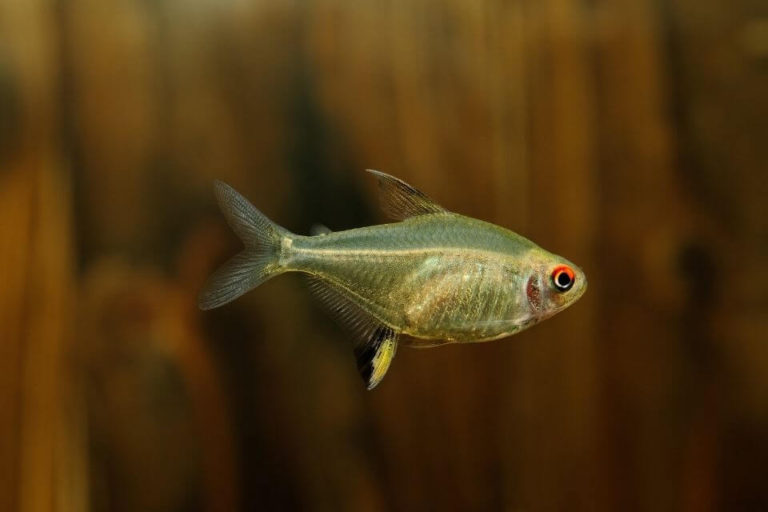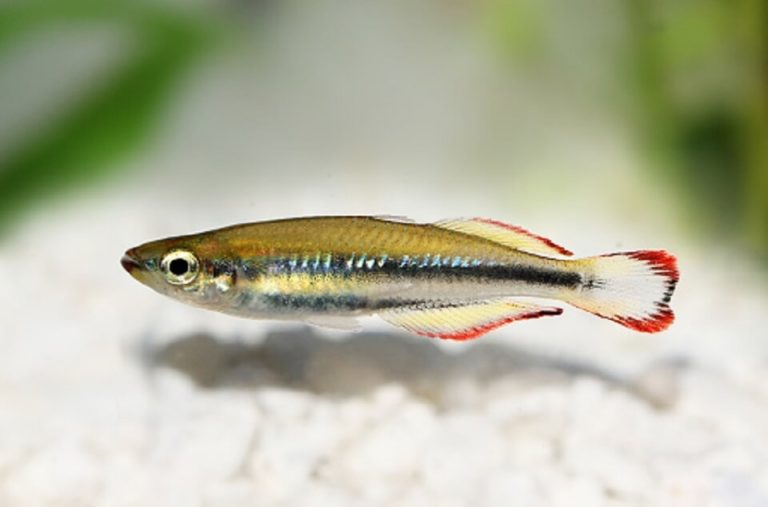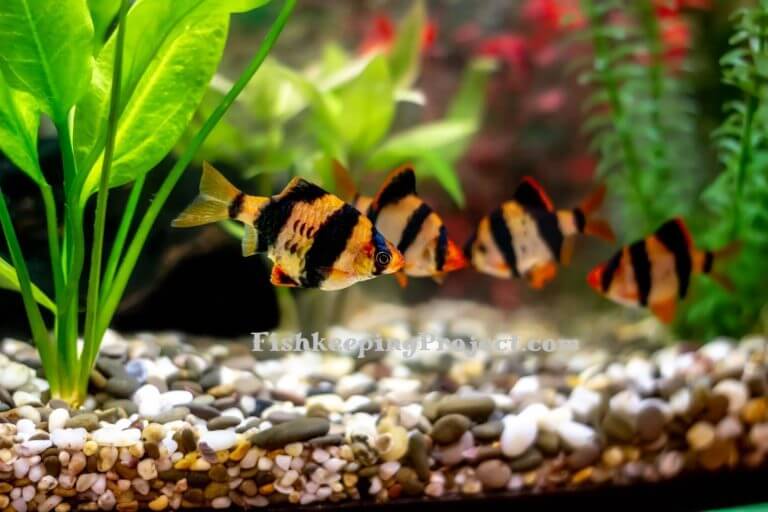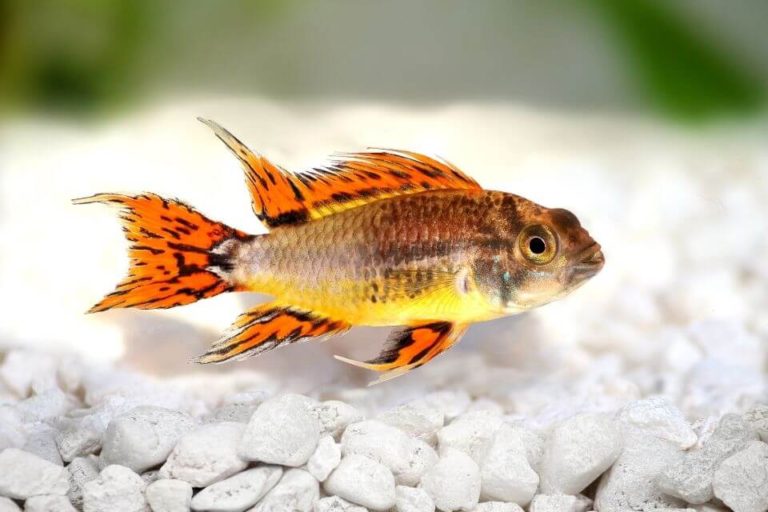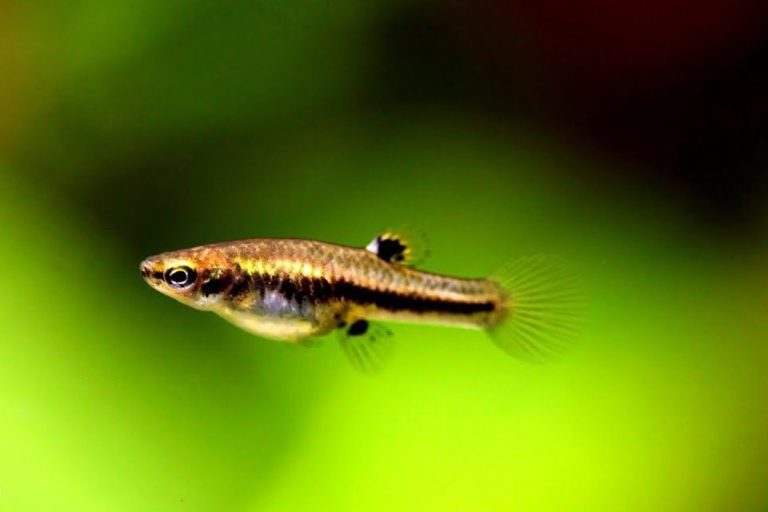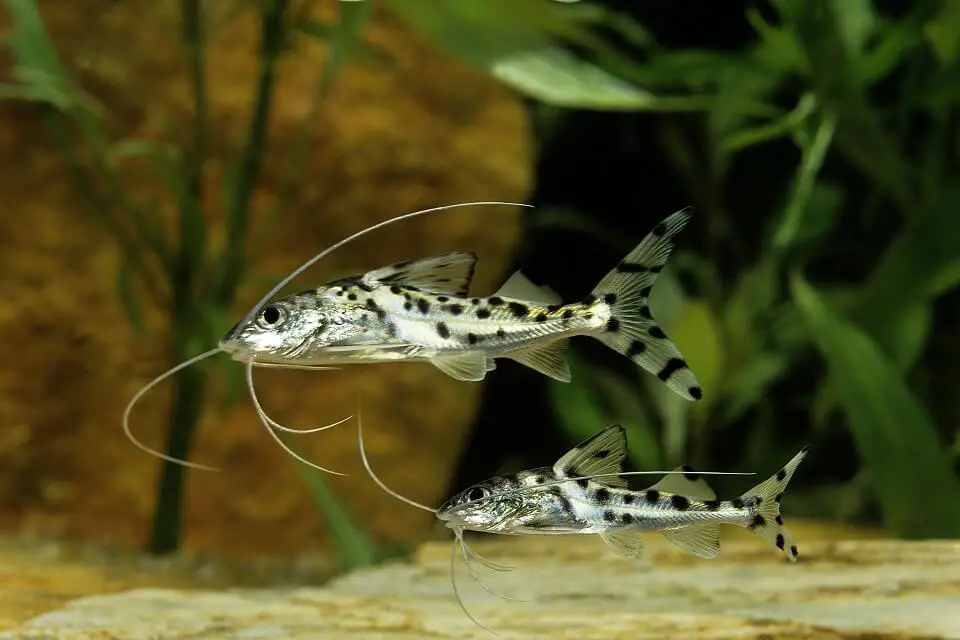Koi Betta Care 101 – Food, Breeding, Tank Mates, Tank Size and Setup

KOI Betta fish is a colorful variation of Betta splendens (also known as Siamese Fighting Fish) that can be fitted in a small Betta fish tank. It is a tropical fish species that can keep individually.
The practice of Aquarium continues to attract many folks across the globe, with many rearing a variety of pets, including Koi Betta.
Perhaps you have seen these colorful types of Betta fish species in your neighborhood, in pet shops, or maybe on online platforms and wondered what they are.
In a nutshell, Koi Betta fish is a name given to Betta fish due to their changing colors and patterns. The change of color is due to a gene known as the jumping gene.
Due to its beautiful and striking nature, Koi Betta has gained popularity among Betta fish enthusiasts worldwide. This KOI Beta Care article will find useful information to care for your fish in every aspect.
Species Overview
Betta Splendens is the scientific name given to the Koi Betta fish, otherwise known as Marble Betta. The fish belongs to the Osphronemidae family and is omnivorous.
They are not widespread in the wild and are also known as Siamese fish. Koi Betta fish shares the same family as Paradise Fish and Gourami Fish. Although Koi Betta resembles the Japanese Koi Carp, they are not related whatsoever.
They have gorgeous color patterns ranging from orange, blue, and white with elegant fins across their bodies. Due to their beautiful color, they can easily be noticed by the rest. Male Bettas have more ornate fins and intense colorations than females.
Koi Betta is a freshwater fish that has vibrant and varied coloration. They belong to the genus Betta, fall under the Actinopterygii and phylum Chordata class, and are highly territorial.
Male Bettas are known for attacking themselves, especially when kept in the same tank. The genus Betta comprises over 73 species, with Betta Splendens being the most popular.
Koi Betta Size
Koi Betta grows up to 3 inches long in size (approximately 7.6 cm). Male Koi Betta is a bit longer than a female fish, but some females tend to have large girths than males.
However, their maximum size does not exceed 3 inches. Like every other pet, the kind of treatment you give them while young will determine their maturity size.
Koi Betta Lifespan
The average lifespan of the koi bettas is between 2 to 3 years. However, when it comes to the lifespan, the aquarist is equally responsible for the long life of their pets.
It is essential to maintain all the conditions attributed to the fish relatively well. A balanced diet, stress-free environment, and quality water conditions extend the quality and lifespan of your fish.
Unfortunately, up to 3 years will be hypothetical if you forget to ensure a quality life for the Koi bettas.
Behavior and Temperament
Most koi bettas are lively and athletic. They broadly fall under the Plakat Betta variety. They are aggressive because of their territorial nature. Two male koi bettas should not be kept in the same tank due to their fighting nature.
Despite the aggressive nature, koi bettas` behaviors are fascinating. As long their territory is not invaded, they can lead peaceful lives with other tank mates. The koi bettas exhibit the following behaviors:
Glass Surfing:
Koi betta fishes have the behavior of swimming near the tanks, especially when they see strangers; they tend to swim close to the tank’s side with the urge to jump out of the tank. When they are stress-free, they swim near the edge of the tank upon noticing their owners.
Bubble Netting:
When it exhibits this behavior, it means it’s healthy and sometimes ready to mate. You shouldn’t confuse the two; it can sometimes perform bubble netting when not ready to mate.
Sometimes, Koi Betta fish build bubble nests if they are unhappy with current living conditions, hungry, or when they are attacked. The jumping nature of your koi betta should be a red flag, and as an aquarist, once you notice this behavior, pay a close eye to your fish.
Further, when water is toxic, too acidic, or with fluctuating temperatures, the Koi Betta fish will often try to jump out of the tank. In the wild, when it is too hot, koi betta exhibits the behavior of jumping out in search of water bodies.
Koi Betta Appearance and Colors
The stunning and vibrant coloration of Koi Betta fish makes it easy to identify them. They have a variation of a mixture of colors and patterns. The most significant colors of Koi betta are black, white, orange, and blue shades.
Even though some say they are long-finned, most of the koi bettas are short-finned. Have you ever seen the shape of Plakat Bettas? The best way to describe Koi betta is by looking at all the six types of Koi bettas.
They include:
- Fancy Koi Betta: The fancy Koi Betta exhibits at least three different colors. Mostly they appear in blue tail fins, black, orange, and some white colors across their bodies.
- Galaxy Koi Betta: It is the most available Koi type. They are widespread, and the name galaxy is given to them due to sparkly scaling that glitter when they are in motion.
- Candy Koi Betta: They appear in a variety of colors, including yellow, black, blue, and red. The name is assigned to them because they resemble a candy treat. Some folks call them Ice Cream Betta since they look like ice cream bars.
- Tiger Koi Betta: They are gorgeous with high intensity of yellow coloration. Their bodies equally exhibit blue and black colors that compliment them. Their appearance is stunning.
- Nemo Koi Betta: After the Galaxy variety, Nemo betta comes second in popularity. They appear in black, red, and orange colors.
- Samurai Koi Betta: They appear in different colors. They are the most uncommon bettas to find and exhibit scales like the dragon.
Consequently, the various types of Betta fish exhibit different appearances. However, the jumping color gene is shared among all kinds of Koi Bettas, leading to the changing color patterns.

Koi Betta Fish Care
Provided you follow the guidelines, keeping Koi Bettas is simple. They live well in tanks with low water concatenation and calm water spots.
To emulate the natural habitat, Koi Betta tanks should possess excellent filtration systems and a bit of heating to maintain water temperatures. The water should be soft and warm to emulate the tropical waters.
Regular changing of water enhances the quality of life of your fish. Further, the tank and water levels should be accessible for the koi betta to breathe directly from the surface.
The tank size should be adequate to provide enough space for their movements. Once you take good care of your fish, the Koi Betta fish lifespan will be longer.
– Koi Betta Tank Size
The tank size is dependent on the number of fish that you plan to keep. However, new tanks are highly recommendable at least 5 gallons for a single fish.
The long-finned Koi Betta shouldn’t be kept in shallow tanks because they will be more stressed and prone to unhealthy living. We have reviewed a few of the best Betta fish tanks available in the market can be found here.
Koi Betta fish does not live longer; thus, any obstruction, especially regarding how their stay, will significantly reduce their life span. The tank size should be spacious to allow your fish to move around.
Equally, due to their aggressive and territorial nature, ensure the tank is accommodative of this behavior. It is, therefore, significant to balance between too much space and inadequate space.
– Koi Betta Tank Setup
Before setting up your koi betta’s fish tank, you should consider the following aspects:
Decorations. Before selecting the ideal decoration for your Koi betta fish, you should ensure they do not hurt your fish; they should be smooth.
- For instance, silk is more recommendable, especially when installing artificial plants in the tank. Koi Bettas fish are territorial and sometimes like to hide. It is fundamental to install some tunnels and caves to provide a hideout environment in the tank.
- Sand or gravel is the most suitable substrates to place at the base of your koi betta tank. Consequently, emulating the natural shallow waters or streams is best, especially by providing an ideal environment for the growth of active plants.
- The Koi Bettas fish are active during the day and sleep during the night. During the day, your Koi betta tank should exhibit the typical lighting conditions, whereas you should put off the lights at night to allow your fish to sleep. You don’t have to spend more resources on creating artificial lightning. Let the tanks emulate normal lighting patterns.
- Koi Betta tanks should exhibit a quality filtration system. While heightening the filtration system, gentle filters should be in place. The filtration system should mimic the natural habitat. Adjustable filters are recommendable to enhance the filtration process.
- Whatever you do, ensure to heighten your tank’s filtration system to improve the quality of water. In a planted setup, sponge materials should be minimal to allow the filtration process.
– Water Conditions and Parameters
Buying and sustaining koi betta fishes are two different things. To continue keeping a koi betta fish, you should embrace the following water parameters.
To survive Koi Bettas, water temperature should range from 76 to 85 degrees Fahrenheit. They are used to the waters of South Asia, which are usually warm and neutral.
You should change water from the tank regularly to allow your fish to lead healthy lives. These Betta fish species are highly sensitive to temperature fluctuations.
To keep up with the ideal temperature, you should emulate the water temperatures found in Indonesia and Vietnam. Keeping live plants around your tank is vital for air circulation.
They also love to live in soft water conditions. The pH range should be kept at around 6.0 to 7.5 in the Aquarium. The water level should give fish the freedom to swim and move around as they look for oxygen. Keeping your water clean is thus inevitable.
The good thing about Koi Betta is its ability to change oxygen to energy, so the oxygen level should be kept constant in the water tanks.
- Water Temperature: 76 – 85° F (24 – 29° C)
- Acidity Levels: 6.0 – 7.5 pH
- Water Hardness: 5 – 20 dKH
- Nitrate: Under 20 ppm
– Suitable Aquarium Plants
As their natural habitat, it is essential to provide many plants to your fish. Koi betta, love hideouts, and embracing the same in your tank is crucial. The following plants are suitable for kori bettas.
- Java Ferns
- Anubias
- Sword Plant
The above plants should give your Betta enough room for swimming and movement.
– Common Diseases and Prevention
Koi Betta is prone to morphological illness. Some common diseases include:
- Swim bladder diseases
- Fin rots.
The good news is that the above conditions are easily cured with medication. Sadly, they are prone to tumors that are hard to treat. To be on the safer end, once you notice an abnormality in your fish, it is essential to isolate the fish into a quarantine tank.
Bacteria or ulcers mainly affect theKoi Betta. Regular cleaning, changing, and ensuring water is in good condition will prevent various diseases. Avoid stressing your fish and put them under a well-balanced diet to increase their immune system.
Food and Feeding
When it comes to feeding, Koi Betta fish is versatile. From frozen, pellet, and flake food, they are never picky. Some aquarists prefer feeding their pets with black worms to boost their immune system.
Algae is equally important for your koi bettas and if you are unsure where to get black worms, consider ordering live black worms from the online platforms. As an aquarist, you should be intelligent enough to emulate natural foods. For instance, Brine shrimp works in place of the black worms.
You should not overfeed your koi betta with fries; three times a day is enough. Leftovers should be picked from the tank to avoid food poisoning to your fish.
They are sometimes picky with foods; however, they become easy to feed once you realize their preferences. Ensure they don’t gain a lot of weight because they constipate easily, and while feeding them, ensure to break food substances.
Difference Between Male Koi Betta and Female Koi Betta
Sometimes telling the difference between your male Koi Betta and female Koi Betta can confuse beginners. In every game, you must always begin from somewhere. Take time and evaluate your fish’s fins; there is always a difference in how they look.
Female fish have smaller and slightly shorter fins compared to male fish. Sometimes females and males can exhibit the same fins size; however, the difference begins with males having heavier ventral fins.
Further, their physique exhibit differences, with female fish having streamlined bodies than male marble bettas. Adult females develop white lumps, which signify egg spots, and for the females lacking egg spots, it means they are still young.
The body of a male marble betta is brighter than female marble bettas. Male koi bettas have large heads with curved bodies compared to the streamlined female koi bettas` bodies. When spawning, female koi bettas have rounder stomachs.
Breeding Koi Betta Fish
When it comes to breeding Koi Betta fish, you don’t need much. However, you should embrace patience. These types of fish can be bred by anyone as long you are ready to give your pet a good life.
The changing color patterns exhibited by the Betta fish attract many aquarists. The partners selected to be bred alongside Koi Bettas pose significance, especially when it comes to color variation.
The genes of Koi Bettas are co-dominant; thus, when you pair them with other solid fish, you are sure of getting spawn fish with koi betta coloration and patterns. Their genes are strong to the extent of getting at least 4 out of 5 spawn fish when you pair them.

Sometimes, aquarists cross breed two Koi Bettas to achieve more pets in their tank. However, getting a 100% of betta offspring is not a guarantee. Wonders shall never cease, and sometimes getting darker or light-colored fish shouldn’t come as a surprise.
How do you tell that a male Koi Betta is ready to mate?
Once you see your male Betta is constantly building bubble nests, chances are the male Betta is prepared for mating. The male Betta becomes more aggressive during this time, especially with female marble bettas who try to approach their nests.
Koi Betta Fish Tank Mates
Like every other fish in the Betta family, Koi Betta needs tank mates that are peaceful. While looking for suitable tank mates, it would help if extensive research is done to avoid stress and discomfort for your marble bettas.
The following list shows suitable Koi Betta Tank Mates:
- Harlequin Rasbora
- Diamond Tetra
- Cardinal Tetra
- Rummy Nose Tetra
- Cory Catfish
- Kuhli Loach
- Black Neon Tetra
- Silver Tip Tetra
- Galaxy Rasbora
- Zebra Loach
- Ramshorn Snail
In addition, some fish should be avoided due to their aggressive nature. It would be best if you, therefore, avoided the following types:
- Fish with extended colorful fins
- Cichlids Species
- Aggressive barbs such as Tiger Barbs
To maintain the jumping colorful pattern nature and lifespan, you should avoid any mates that would cause stress to your Koi Betta Fish. They are beautiful; they deserve peaceful environments.
Origin and Distribution
Koi Betta originated from Orville Gulley, a Betta breeder from Asia. Initially, they were known as Marbled Bettas, but due to their colorful intensity and patterns, they changed to Koi Betta. Bettas are equally native to Thailand, Malaysia, Indonesia, and Vietnam.
They are also distributed along China’s shallow waters. Unlike the Bettas bred as pets, wild Bettas are dull greyish with short fins.
The origin of Koi betta keeping can be traced from more than two and half centuries ago in Thailand, with the King of Siam giving importance to its breeding. Equally, their distribution is prevalent in the flood plains, waterways, streams, and rice paddies across Southeast Asia.
FAQs
Do Koi Betta Fish Change Color?
Yes. However, when compared with other Bettas, Koi Bettas’ color change is systematic. Sometimes they exhibit the same color for up to one year. Usually, a sudden change of color is a sign of bad news.
Perhaps there is a change in water conditions, and temperate, or the fish is suffering from an unseen disease. Change of color should therefore be a red flag.
Are Koi Betta Aggressive?
Yes, Koi Bettas are aggressive. Like every other Betta species, they are very territorial towards their male counterparts. Their fighting nature is one of a kind; as long as there is an invasion of their territory, they don’t care about fighting to the death.
To avoid fights, you should never put two male Koi Bettas in the same tank. In addition, when mating, male fish is aggressive, especially when their nests are invaded.
Sometimes hunger would lead to your fish becoming aggressive; once you notice unusual aggressive behavior, pay close attention to your pet and find out the issue. But in nature, Koi Betta is aggressive.
How Big Do Koi Betta Get?
Their growth is not significant enough; like all other Betta splendens, koi betta grows to a maximum of 7.6 cm or 3 inches. Moreover, depending on the feeding style, they are likely to increase their weight and size, especially male fish.
Are Koi Bettas Rare?
Yes, they are rare. In the pet stores, they are unlikely found, and if found, they are usually on the exotic breeds sections. Mostly, you can get them on orders.
How Much Do Koi Bettas Cost?
Koi Bettas are found in the local pet stores. Alternatively, online platforms are ideal places to find these stunning color patterned pets.
Compared to other Bettas species, Koi Betta fish is the most expensive, and their estimated price ranges from $30 to $65 depending on the size and breeder quality.
Final Thoughts
You can now comprehend why most aquarists are in love with the Koi Betta fish from the above article. With their coloration and patterns, the population of Koi Betta is prevalent.
Due to their admirable behavior, this category of fish is easily identified among other fishes. Like every other pet, Koi Bettas need peace and enough space to swim around. Water parameters are essential in ensuring the healthy living of your fish.
As you can see, their lifespan is short; however, as an aquarist, you should be brave and intelligent enough to improvise and heighten measures that lead to quality and longer lives for your fish.
Any mistake or laziness will severely affect the behavior and quality of your pet. But if follow the above care information you would be good to go with Koi Betta fish.



